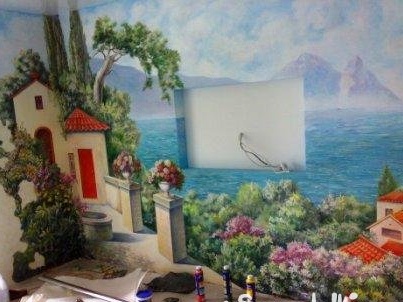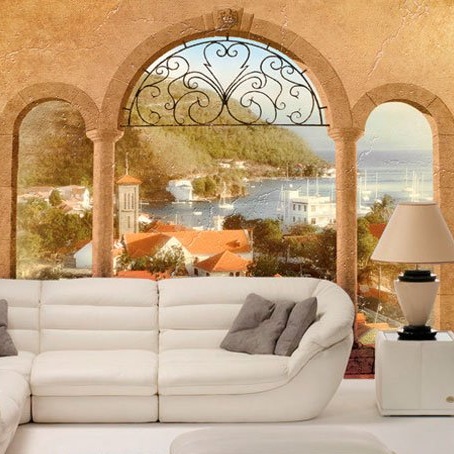
Since ancient times, people have developed the belief that wall paintings will not only decorate the house, but will also attract luck, prosperity and happiness into it. Today, painting is also very popular, and it is deserved. After all, art painting is, in fact, the creation on the walls of a painting by the hands of the artist in your house or apartment. This is one of the oldest types of fine art, the roots of which go back centuries to the ancient period - the Paleolithic - of the same period that was more than 30,000 years ago, and at that time the ancient people who were driven by a craving for fine art could already paint their homes with frescoes, which were in the rocks and caves.
In the old days, art painting was used everywhere, and most widely - of course, in churches, in churches, chapels, houses of noble people. Currently, artistic painting, except on buildings with a religious orientation, is increasingly being used not only on the walls of residential buildings, but also it decorates offices, places for recreation and entertainment.
The most common popular technique for performing artistic painting, which is also a classic, in the modern world is a fresco. The materials for the fresco are: ceramic chips, lime, river sand. Freshly applied and wet stucco was not yet frozen, the contours of the future pattern were drawn, and then it was already decorated with multi-colored water-based paints.

The initial materials for applying the mural are very affordable and inexpensive, however, despite this, the implementation of wall painting at all times was very expensive, because it required accuracy of speed and execution, and only experienced artists could guarantee the quality of the work. After the fresco has dried, the drawing is no longer possible to be somehow corrected; correction can be made only by removing the plaster layer and redoing the drawing again.A huge advantage is the durability of the frescoes, because when applied correctly, they can maintain their original appearance for several centuries. Therefore, modern man can still admire the creations of the Great Da Vinci since in museums and temples, the works of Botticelli, Michelangelo and other artists are also pleasing to the eye.

Modern technology for frescoes involves the creation of artistic painting with acrylic paints on a cleaned, carefully plastered and putty surface. Murals can also be applied on wallpaper, on a surface with water-based paint, on structurally made plaster, and a distinctive highlight is the addition of a picture to an existing artistic relief, which is done on the walls specifically for this picture. After the application of the painting is completed and the paints are completely dried, the mural, depending on the application technology, needs to be varnished, which will subsequently preserve its original appearance and prevent the colors from losing brightness, undergo contamination or mechanical damage.
